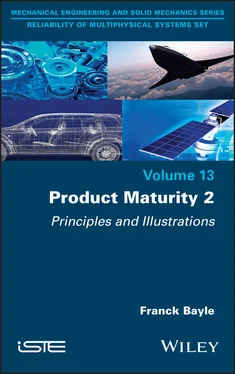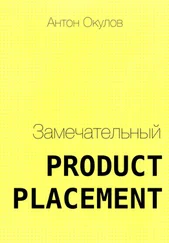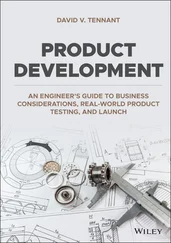5 Chapter 6Table 6.1. Examples of various cases of Weibull law combinationsTable 6.2. Boundaries of β parameter of a PLP modelTable 6.3. Boundaries of parameter β of a PLP modelTable 6.4. Delivery flow and number of observed failuresTable 6.5. Delivery flow and number of observed failuresTable 6.6. Scoreboard of burn-in effectivenessTable 6.7. Example of evolution of the number of failures
1 Cover
2 Table of Contents
3 Title Page Reliability of Multiphysical Systems Set coordinated by Abdelkhalak El Hami Volume 13
4 Copyright First published 2022 in Great Britain and the United States by ISTE Ltd and John Wiley & Sons, Inc. Apart from any fair dealing for the purposes of research or private study, or criticism or review, as permitted under the Copyright, Designs and Patents Act 1988, this publication may only be reproduced, stored or transmitted, in any form or by any means, with the prior permission in writing of the publishers, or in the case of reprographic reproduction in accordance with the terms and licenses issued by the CLA. Enquiries concerning reproduction outside these terms should be sent to the publishers at the undermentioned address: ISTE Ltd 27-37 St George’s Road London SW19 4EU UK www.iste.co.uk John Wiley & Sons, Inc. 111 River Street Hoboken, NJ 07030 USA www.wiley.co © ISTE Ltd 2022 The rights of Franck Bayle to be identified as the author of this work have been asserted by him in accordance with the Copyright, Designs and Patents Act 1988. Any opinions, findings, and conclusions or recommendations expressed in this material are those of the author(s), contributor(s) or editor(s) and do not necessarily reflect the views of ISTE Group. Library of Congress Control Number: 2021952701 British Library Cataloguing-in-Publication Data A CIP record for this book is available from the British Library ISBN 978-1-78630-740-8
5 Foreword by Laurent Denis
6 Foreword by Serge Zaninotti
7 Acknowledgements
8 Introduction
9 Begin Reading
10 List of Notations
11 List of Definitions
12 List of Acronyms
13 References
14 Index
15 Other titles from iSTE in Mechanical Engineering and Solid Mechanics
16 End User License Agreement
1 v
2 iii
3 iv
4 ix
5 x
6 xi
7 xiii
8 xiv
9 xv
10 xvii
11 xviii
12 1
13 2
14 3
15 4
16 5
17 6
18 7
19 8
20 9
21 10
22 11
23 13
24 14
25 15
26 16
27 17
28 18
29 19
30 20
31 21
32 22
33 23
34 24
35 25
36 26
37 27
38 28
39 29
40 30
41 31
42 32
43 33
44 34
45 35
46 36
47 37
48 38
49 39
50 40
51 41
52 42
53 43
54 44
55 45
56 46
57 47
58 48
59 49
60 50
61 51
62 52
63 53
64 54
65 55
66 56
67 57
68 58
69 59
70 60
71 61
72 62
73 63
74 64
75 65
76 66
77 67
78 68
79 69
80 70
81 71
82 72
83 73
84 74
85 75
86 76
87 77
88 79
89 80
90 81
91 82
92 83
93 84
94 85
95 86
96 87
97 88
98 89
99 90
100 91
101 92
102 93
103 94
104 95
105 96
106 97
107 98
108 99
109 100
110 101
111 102
112 103
113 104
114 105
115 106
116 107
117 108
118 109
119 110
120 111
121 112
122 113
123 114
124 115
125 116
126 117
127 118
128 119
129 120
130 121
131 122
132 123
133 124
134 125
135 126
136 127
137 128
138 129
139 130
140 131
141 132
142 133
143 134
144 135
145 136
146 137
147 139
148 140
149 141
150 142
151 143
152 144
153 145
154 147
155 148
156 149
157 151
158 152
159 153
160 154
161 155
162 157
163 158
164 159
165 160
166 161
167 162
168 163
169 164
170 165
171 166
Reliability of Multiphysical Systems Set
coordinated by
Abdelkhalak El Hami
Volume 13
Product Maturity 2
Principles and Illustrations
Franck Bayle

First published 2022 in Great Britain and the United States by ISTE Ltd and John Wiley & Sons, Inc.
Apart from any fair dealing for the purposes of research or private study, or criticism or review, as permitted under the Copyright, Designs and Patents Act 1988, this publication may only be reproduced, stored or transmitted, in any form or by any means, with the prior permission in writing of the publishers, or in the case of reprographic reproduction in accordance with the terms and licenses issued by the CLA. Enquiries concerning reproduction outside these terms should be sent to the publishers at the undermentioned address:
ISTE Ltd
27-37 St George’s Road
London SW19 4EU
UK
www.iste.co.uk
John Wiley & Sons, Inc.
111 River Street
Hoboken, NJ 07030
USA
www.wiley.co
© ISTE Ltd 2022
The rights of Franck Bayle to be identified as the author of this work have been asserted by him in accordance with the Copyright, Designs and Patents Act 1988.
Any opinions, findings, and conclusions or recommendations expressed in this material are those of the author(s), contributor(s) or editor(s) and do not necessarily reflect the views of ISTE Group.
Library of Congress Control Number: 2021952701
British Library Cataloguing-in-Publication Data
A CIP record for this book is available from the British Library
ISBN 978-1-78630-740-8
Foreword by Laurent Denis
Human beings are plagued by major worries, such as fear of death and fear of illness. “How long will I live?” is a question that arises even in childhood. “Will I one day have to deal with a condition similar to my neighbor’s?”. We live in an age where disease, death, old age and disability are subjects to be avoided in polite conversation. “How are you?” is a standard greeting to which a different and darker reply than the traditional, “I’m very well, thank you, and you?” risks embarrassing or even annoying the other party. Avoiding the problems of others, for fear they may be contagious, gives us a sense of immortality on a daily basis.
This is a rather recent phenomenon, as many previous generations did not hide the elderly or sick, although the risk of accidents in everyday life was higher and so death was a more common occurrence. It was certainly a source of anxiety, but the Church was there to alleviate it. Today we hide this subject by paying attention to a society made up of young, healthy people whom we must emulate at all costs so as to be part of it. Since our days are more or less the same, we succumb to procrastination at the first opportunity and Seneca’s carpe diem loses its wonderful charm to give way to flat Platonic reflection.
Surprisingly, a similar problem exists in industry: there is a willingness to forget that a product may be subject to failure during its lifetime, given it has been optimally designed for the required functions. Some simple principles of upstream reliability analysis, from the design phase onwards, are now well-established, but they thwart the deep-seated notion that proper design outweighs everything else. Two essential points are overlooked: when a technology naturally reaches maturity, only a technological breakthrough can mark a distinction between two products performing the same function, unless it can be demonstrated that product A will last longer and be safer than product B. Moreover, the uses of the same product can multiply according to its ability to adapt to multiple environments. A good understanding of these uses in the field makes it possible to improve robustness properly at the design stage, in order that it can withstand any mission profile assigned to it during operation; this is one way to increase competitiveness.
Читать дальше













